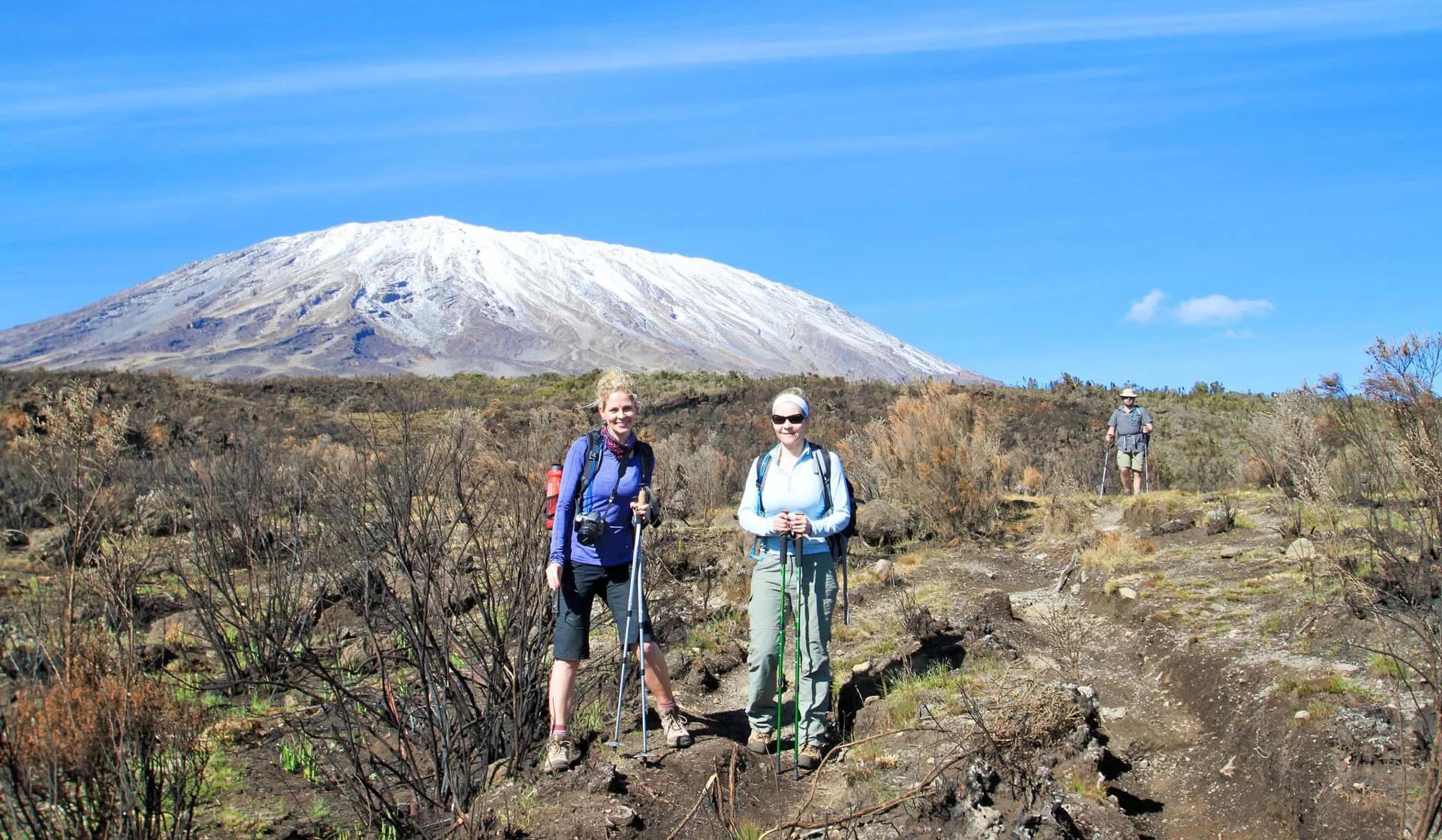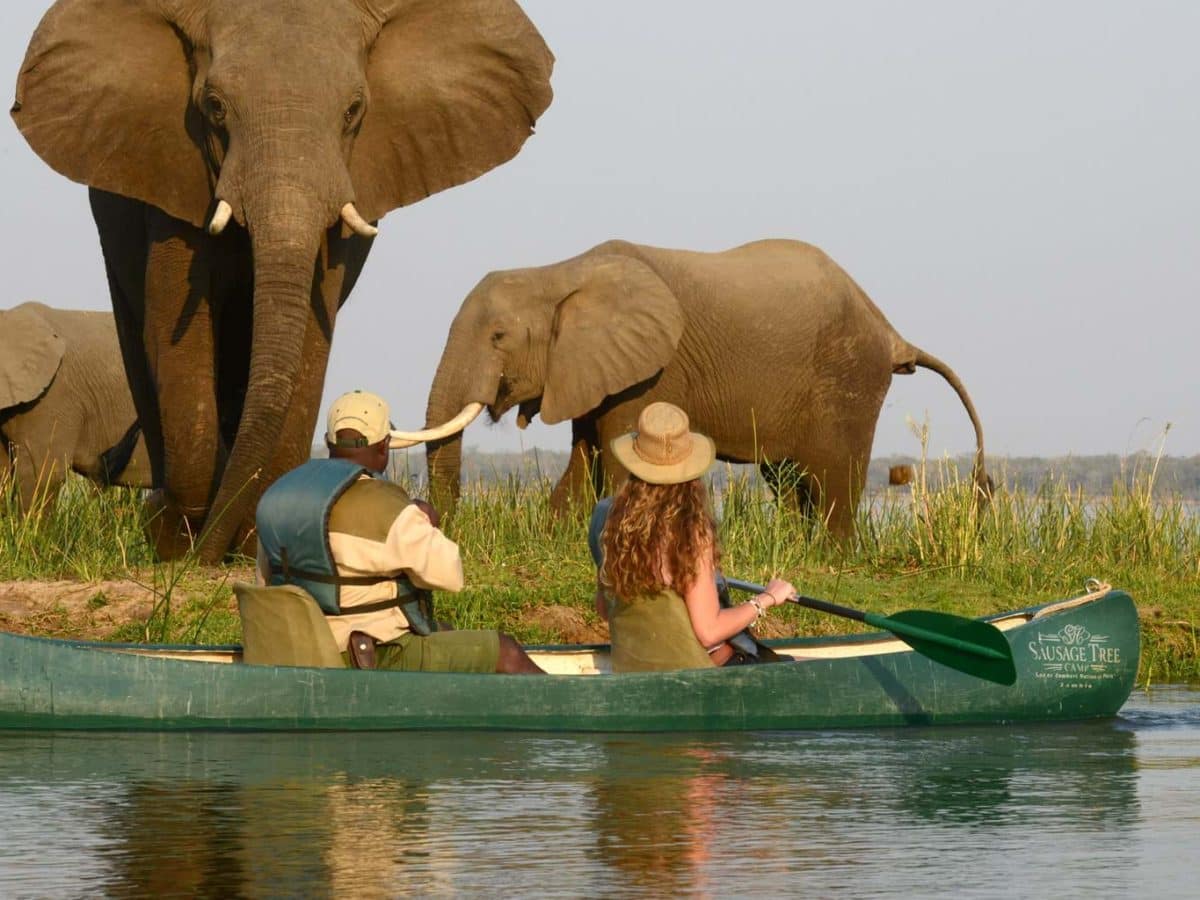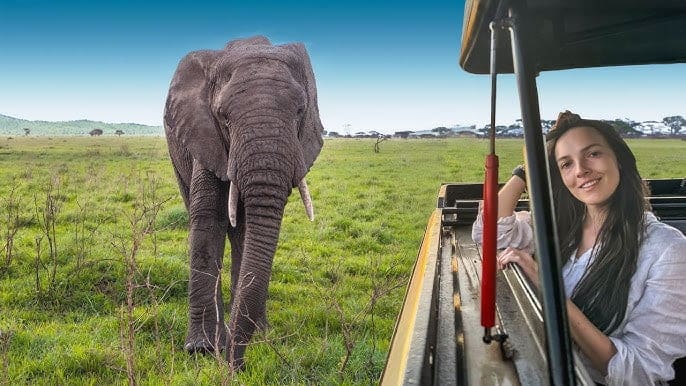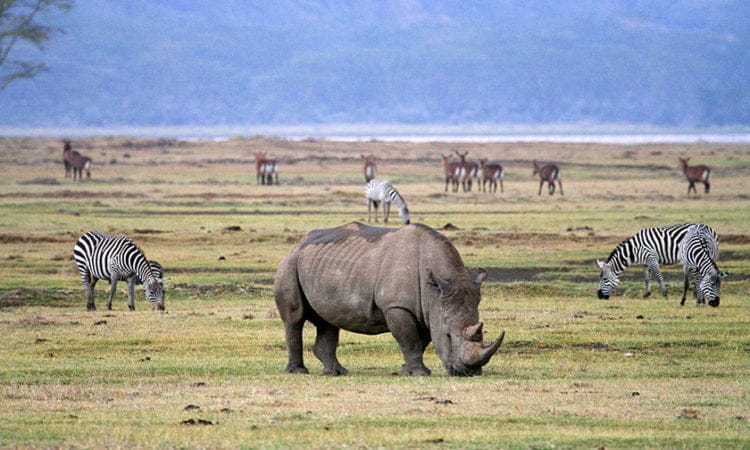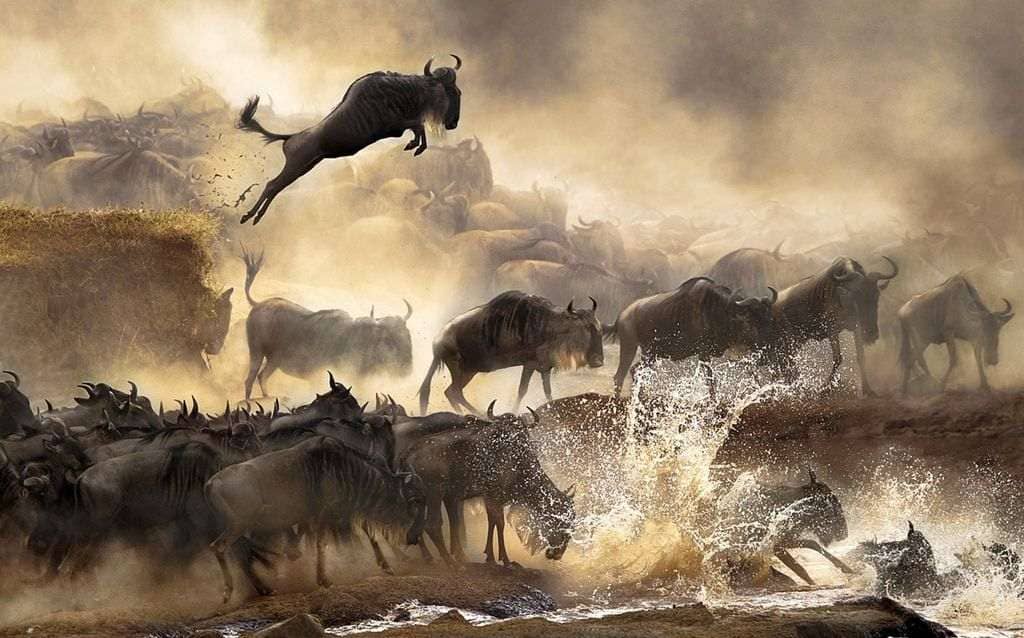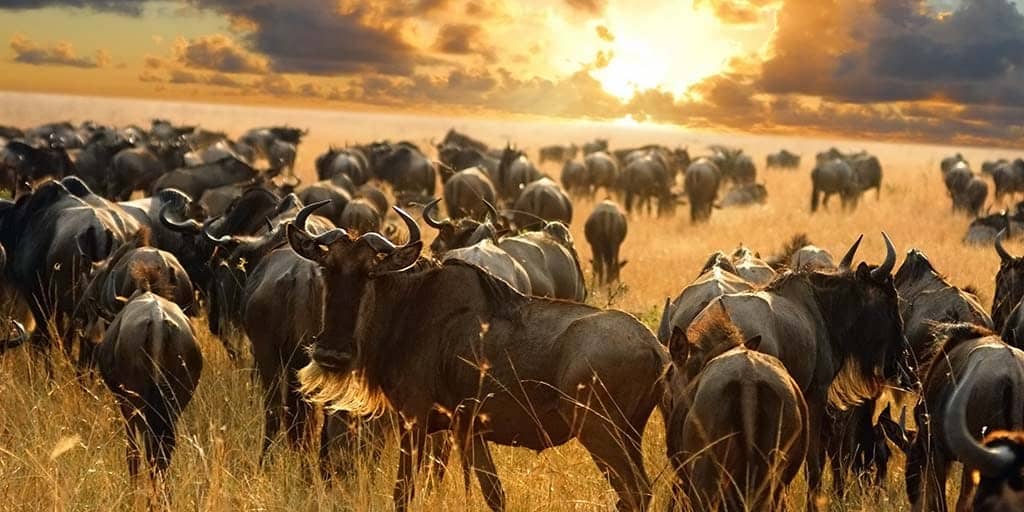Witnessing Nature’s Majesty: The Great Wildebeest Migration
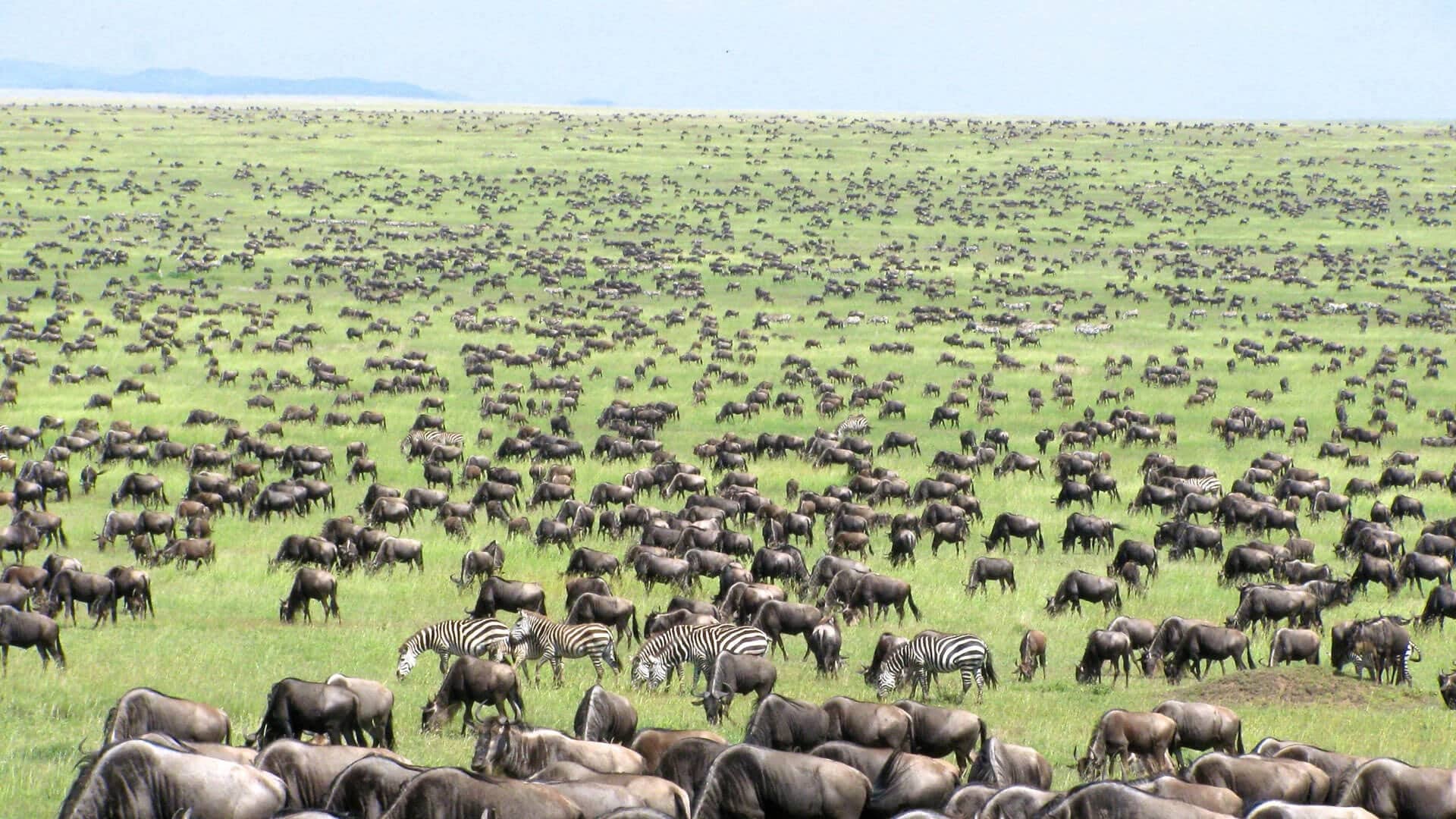
Every year, the plains of East Africa become the stage for one of the most remarkable events in the natural world: The Great Wildebeest Migration. This awe-inspiring journey, involving over two million wildebeest, zebras, and gazelles, spans across the Serengeti National Park in Tanzania and the Maasai Mara National Reserve in Kenya. It’s a spectacle of survival and instinct, drawing in wildlife enthusiasts and photographers from around the globe.
The Journey Begins
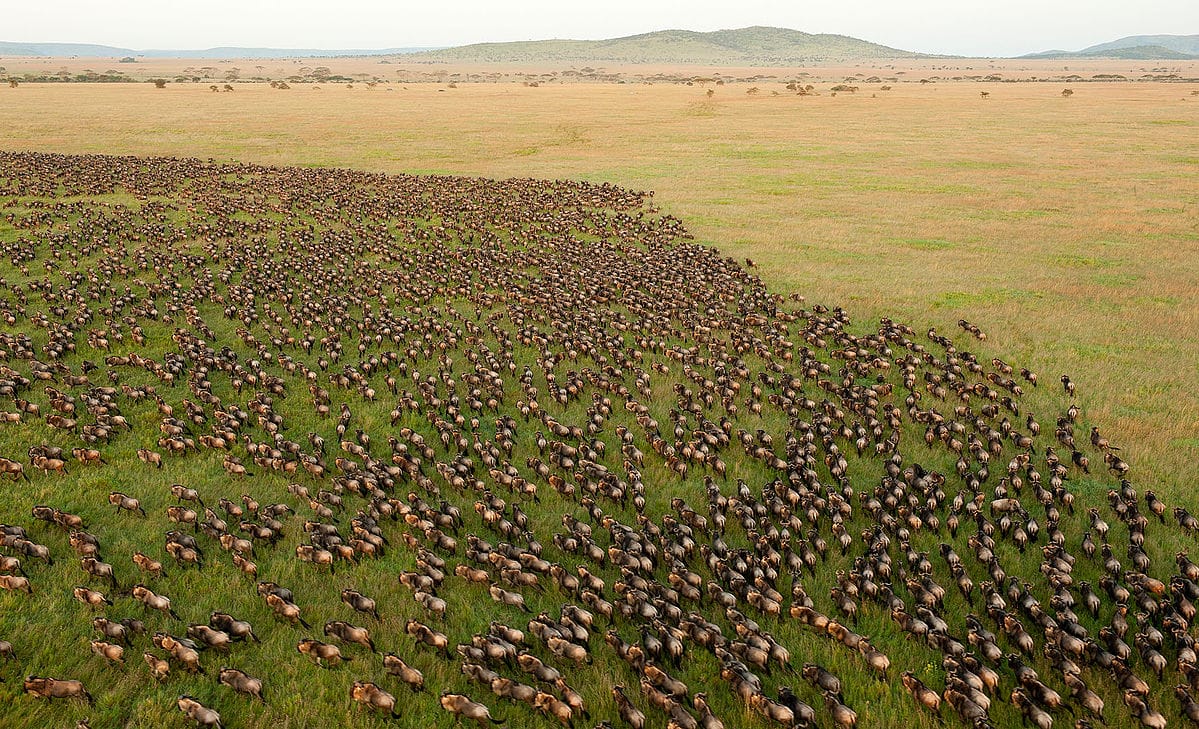
The migration kicks off in the Serengeti, typically around December, when the herds gather on the southern plains to give birth to their young. As the rainy season ends, usually in April and May, the herds start moving northward in search of greener pastures and fresh water sources. This journey covers over 1,800 miles in a clockwise direction through the Serengeti ecosystem.
The Mara River Crossing
One of the most dramatic highlights of the migration occurs around July to October, when the herds encounter the Mara River. This obstacle marks a perilous crossing, as thousands of animals brave crocodile-infested waters and strong currents. The sight of thousands of wildebeest plunging into the river, accompanied by zebras and gazelles, is both breathtaking and heart-wrenching, as predators like lions and crocodiles await their chance to strike.
Role in Ecosystem
Beyond its visual spectacle, the migration plays a critical role in the ecosystem. The constant movement of large herbivores helps rejuvenate the grasslands by grazing and trampling, which stimulates new growth. This, in turn, supports a diverse array of wildlife, from predators like lions and cheetahs to scavengers like hyenas and vultures.
Experiencing the Migration
For travelers, witnessing the Great Wildebeest Migration is a bucket-list experience. Safari camps and lodges dot the migration route, offering prime viewing spots to witness river crossings and daily wildlife interactions. The Serengeti’s expansive plains and the Maasai Mara’s rolling hills provide unparalleled opportunities for photographers and nature enthusiasts alike.
Understanding the Annual Cycle: The Great Wildebeest Migration Month by Month
The Great Wildebeest Migration stands as one of the most awe-inspiring natural events on Earth, a testament to the intricate balance of nature and the instinctual rhythms of wildlife. Spanning across the Serengeti plains of Tanzania and the Maasai Mara in Kenya, this migration is a spectacle that captivates wildlife enthusiasts and photographers alike, drawing them to witness millions of wildebeest, zebras, and other animals as they traverse vast distances in search of water and grazing lands.
January – March: Calving Season in Southern Serengeti
The journey begins in the southern Serengeti plains of Tanzania, where from January to March, the landscape transforms into a nursery of new life. Pregnant wildebeest cows gather here to give birth in synchronized mass calving events. The lush, nutrient-rich grasses provide essential nutrition for newborn calves, offering them the best start amidst the abundant predator activity.
April – May: Migration Northward
As the rainy season begins to taper off, usually from April to May, the herds start their northward trek towards the central Serengeti and the western corridor. This period marks the beginning of the long journey dictated by the search for fresh grazing pastures and water sources. The sight of endless columns of wildebeest marching across the open plains is a sight to behold, reflecting their determination and resilience in the face of changing environmental conditions.
June – July: Crossing the Grumeti River
By June, the migration reaches the western Serengeti and the Grumeti River, a significant obstacle that must be crossed. This phase of the migration is punctuated by dramatic river crossings, where tens of thousands of wildebeest and zebras brave crocodile-infested waters and steep banks. It’s a time of high drama and intense predator-prey interactions as crocodiles lie in wait and big cats prowl the banks, seizing opportunities amidst the chaos.
July – October: Northern Serengeti and Maasai Mara
The peak of the migration occurs from July to October when the herds reach the northern Serengeti and cross into Kenya’s Maasai Mara. This period is renowned for the iconic Mara River crossings, where immense herds gather on the riverbanks, hesitating before plunging into the tumultuous waters. The crossings are fraught with danger as predators ambush the vulnerable animals, creating scenes of both triumph and tragedy in the circle of life.
November – December: Return Journey South
As the dry season approaches in November and December, the herds begin their journey back south towards the southern Serengeti plains. This period completes the annual cycle of the Great Wildebeest Migration, as the exhausted animals return to familiar territories where they will rest, graze, and prepare for the next cycle of birth and migration.
Reflecting on the Great Wildebeest Migration
The Great Wildebeest Migration is not merely a spectacle; it is a symbol of resilience, adaptation, and the interconnectedness of species within the Serengeti-Mara ecosystem. For travelers and nature enthusiasts, witnessing this annual phenomenon offers a profound glimpse into the marvels of the natural world. It underscores the importance of conservation efforts to preserve habitats and protect wildlife populations for future generations to marvel and cherish.
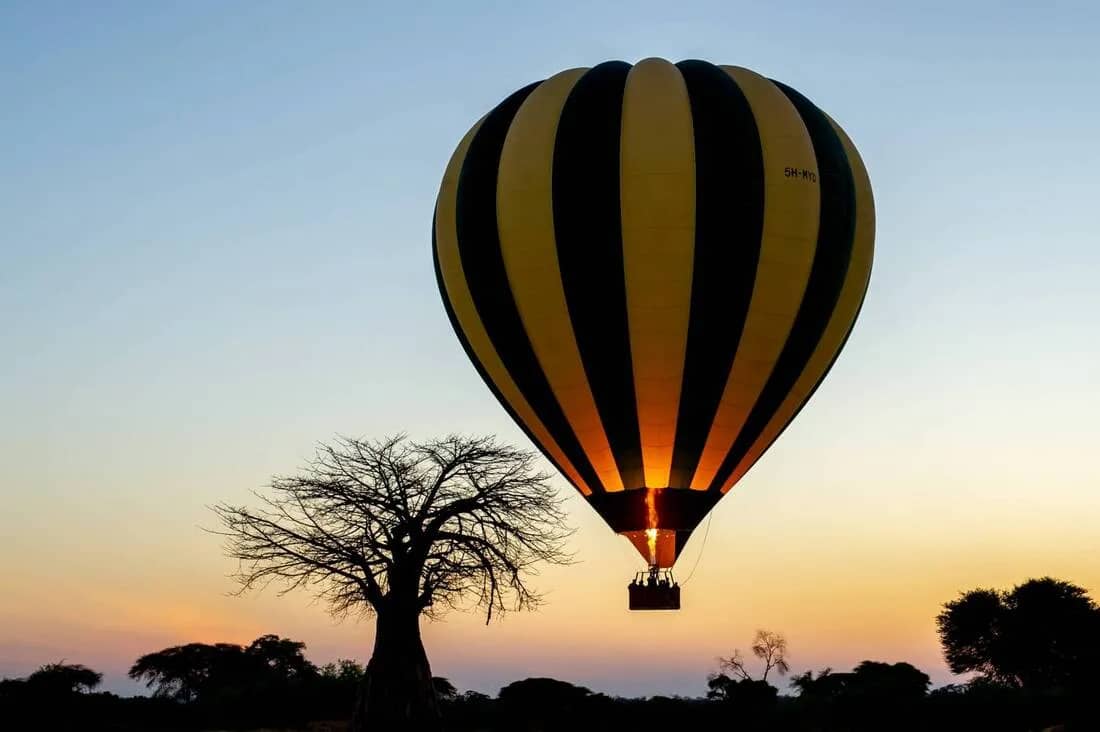
10% Off
For Your First Book

